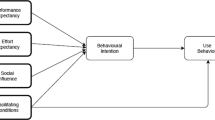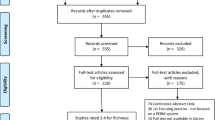Abstract
The effectiveness of information technology in resolving medication problems has been well documented. Long-term care settings such as residential care facilities (RCFs) may see the benefits of using such technologies in addressing the problem of medication errors among their resident population, who are usually older and have numerous chronic conditions. The aim of this study was two-fold: to examine the extent of use of Electronic Medication Management (EMM) in RCFs and to analyze the organizational factors associated with the use of EMM functionalities in RCFs. Data on RCFs were obtained from the 2010 National Survey of Residential Care Facilities. The association between facility, director and staff, and resident characteristics of RCFs and adoption of four EMM functionalities was assessed through multivariate logistic regression. The four EMM functionalities included were maintaining lists of medications, ordering for prescriptions, maintaining active medication allergy lists, and warning of drug interactions or contraindications. About 12 % of the RCFs adopted all four EMM functionalities. Additionally, maintaining lists of medications had the highest adoption rate (34.5 %), followed by maintaining active medication allergy lists (31.6 %), ordering for prescriptions (19.7 %), and warning of drug interactions or contraindications (17.9 %). Facility size and ownership status were significantly associated with adoption of all four EMM functionalities. Medicaid certification status, facility director’s age, education and license status, and the use of personal care aides in the RCF were significantly associated with the adoption of some of the EMM functionalities. EMM is expected to improve the quality of care and patient safety in long-term care facilities including RCFs. The extent of adoption of the four EMM functionalities is relatively low in RCFs. Some RCFs may strategize to use these functionalities to cater to the increasing demands from the market and also to provide better quality of care.
Similar content being viewed by others
Abbreviations
- RCF:
-
Residential care facilities
- EHR:
-
Electronic health records
- EMM:
-
Electronic medication management
- ACA:
-
Patient Protection and Affordable Care Act
- ADE:
-
Adverse drug events
- NSRCF:
-
National survey of residential care facilities
- HPPD:
-
Direct care hours per patient per day
- PCA:
-
Personal care aide
References
Kohn, L.T., Corrigan, J.M., Donaldson, M.S., To Err Is Human: Building a Safer Health System. Institute of Medicine. Washington, DC: National Academy Press, 1999.
Kaufman, D. W., Kelly, J. P., Rosenberg, L., et al., Recent patterns of medication use in the ambulatory adult population of the United States: The Slone survey. JAMA 287:337–344, 2002.
Beers, M. H., Explicit criteria for determining potentially inappropriate medication use by the elderly: An update. Arch. Intern. Med. 157:1531–1536, 1997.
American Geriatrics Society 2012 Beers Criteria Update Expert Panel, American Geriatrics Society updated Beers Criteria for potentially inappropriate medication use in older adults. J. Am. Geriatr. Soc. 60:616–631, 2012.
Fu, A. Z., Jiang, J. Z., Reeves, J. H., et al., Potentially inappropriate medication use and healthcare expenditures in the US community-dwelling elderly. Med. Care 45:472–476, 2007.
Zhan, C., Sangl, J., Bierman, A. S., et al., Potentially inappropriate medication use in the community-dwelling elderly: Findings from the 1996 Medical Expenditure Panel Survey. JAMA 286:2823–2829, 2001.
Hamilton, H. J., Gallagher, P. F., O’Mahony, D., Inappropriate prescribing and adverse drug events in older people. BMC Geriatr. 9:5-2318-9-5, 2009.
Page, R. L., II, and Mark Ruscin, J., The risk of adverse drug events and hospital-related morbidity and mortality among older adults with potentially inappropriate medication use. Am. J. Geriatr. Pharmacother. 4:297–305, 2006.
Chan, M., Nicklason, F., and Vial, J., Adverse drug events as a cause of hospital admission in the elderly. Intern. Med. J. 31:199–205, 2001.
IMS Institute for Healthcare Informatics. Avoidable costs in U.S. healthcare: The $200 billion opportunity from using medicines more responsibly, 2013.
Kendrick, R., and Bayne, J. R., Compliance with prescribed medication by elderly patients. Can. Med. Assoc. J. 127:961–962, 1982.
Fu, A. Z., Liu, G. G., and Christensen, D. B., Inappropriate medication use and health outcomes in the elderly. J. Am. Geriatr. Soc. 52:1934–1939, 2004.
Park-Lee, E., Caffrey, C., Sengupta, M., et al., Residential care facilities: A key sector in the spectrum of long-term care providers in the United States. NCHS Data Brief 78:1–8, 2011.
Caffrey, C., Sengupta, M., Park-Lee, E., et al., Residents living in residential care facilities: United States, 2010. NCHS Data Brief 91:1–8, 2012.
National Center for Assisted Living. Assisted Living State Regulatory Review. 2010.
Young, H. M., Gray, S. L., McCormick, W. C., et al., Types, prevalence, and potential clinical significance of medication administration errors in assisted living. J. Am. Geriatr. Soc. 56:1199–1205, 2008.
Sloane, P. D., Gruber-Baldini, A. L., Zimmerman, S., et al., Medication undertreatment in assisted living settings. Arch. Intern. Med. 164:2031–2037, 2004.
Sloane, P. D., Zimmerman, S., Brown, L. C., et al., Inappropriate medication prescribing in residential care/assisted living facilities. J. Am. Geriatr. Soc. 50:1001–1011, 2002.
Buntin, M. B., Burke, M. F., Hoaglin, M. C., et al., The benefits of health information technology: A review of the recent literature shows predominantly positive results. Health Aff. 30:464–471, 2011.
Chaudhry, B., Wang, J., Wu, S., et al., Systematic review: Impact of health information technology on quality, efficiency, and costs of medical care. Ann. Intern. Med. 144:742–752, 2006.
Dorr, D., Bonner, L. M., Cohen, A. N., et al., Informatics systems to promote improved care for chronic illness: A literature review. J. Am. Med. Inform. Assoc. 14:156–163, 2007.
Bates, D. W., and Gawande, A. A., Improving safety with information technology. N. Engl. J. Med. 348:2526–2534, 2003.
Stefanacci, R. G., Electronic Medication Management Systems in Long-term Care and Beyond. 4, 2008. Accessed on 16 Sept 2014. Available from http://www.assistedlivingconsult.com/issues/04-02/alc34-Elect%20Med%20Mgmt-331b.pdf.
Blumenthal, D., Launching HIteCH. N. Engl. J. Med. 362:382–385, 2010.
Hikmet, N., Bhattacherjee, A., Menachemi, N., et al., The role of organizational factors in the adoption of healthcare information technology in Florida hospitals. Health Care Manag. Sci. 11:1–9, 2008.
Furukawa, M. F., Raghu, T. S., Spaulding, T. J., et al., Adoption of health information technology for medication safety in U.S. Hospitals, 2006. Health Aff. 27:865–875, 2008.
Kazley, A. S., and Ozcan, Y. A., Organizational and environmental determinants of hospital EMR adoption: A national study. J. Med. Syst. 31:375–384, 2007.
Menachemi, N., Shin, D. Y., Ford, E. W., et al., Environmental factors and health information technology management strategy. Health Care Manag. Rev. 36:275–285, 2011.
Menachemi, N., Mazurenko, O., Kazley, A. S., et al., Market factors and electronic medical record adoption in medical practices. Health Care Manag. Rev. 37:14–22, 2012.
Cherry, B., Carter, M., Owen, D., et al., Factors affecting electronic health record adoption in long‐term care facilities. J. Healthc. Qual. 30:37–47, 2008.
Holup, A. A., Dobbs, D., Meng, H., et al., Facility characteristics associated with the use of electronic health records in residential care facilities. J. Am. Med. Inform. Assoc. 20:787–791, 2013.
Caffrey, C., and Park-Lee, E., Use of electronic health records in residential care communities. National Center for Health Statistics, Hyattsville, 2013.
Center for Disease Control and Prevention. National Survey of Residential Care Facilities 2010, 2014.
SAS Institute Inc. SAS version 9.4.
Baldwin, P. K., McAuley, W. J., and Van Nostrand, J., Organizational factors associated with the use of telehospice. J. Telemed. Telecare 18:90–93, 2012.
Young, G. J., Charns, M. P., and Shortell, S. M., Top manager and network effects on the adoption of innovative management practices: A study of TQM in a public hospital system. Strateg. Manag. J. 22:935–951, 2001.
Acknowledgments
We would like to thank Niodita Gupta, MD, MPH, Graduate Research Assistant at the University of Nebraska Medical Center for her contribution towards editing and proofreading this manuscript.
Funding source
None.
Conflict of interest
The authors declare that they have no conflict of interest.
Sponsor’s role
No sponsor.
Author information
Authors and Affiliations
Corresponding author
Additional information
This article is part of the Topical Collection on Systems-Level Quality Improvement
Rights and permissions
About this article
Cite this article
Bhuyan, S.S., Chandak, A., Powell, M.P. et al. Use of Information Technology for Medication Management in Residential Care Facilities: Correlates of Facility Characteristics. J Med Syst 39, 70 (2015). https://doi.org/10.1007/s10916-015-0252-0
Received:
Accepted:
Published:
DOI: https://doi.org/10.1007/s10916-015-0252-0




